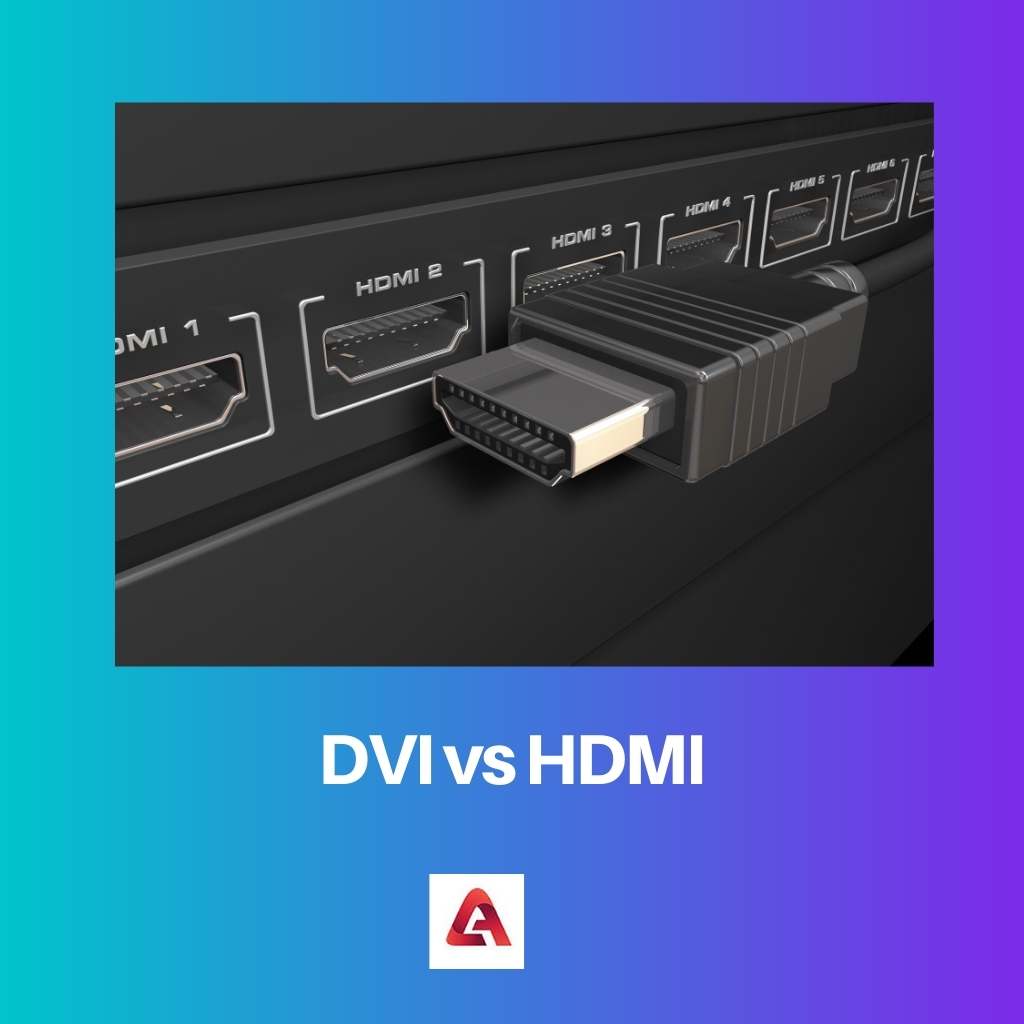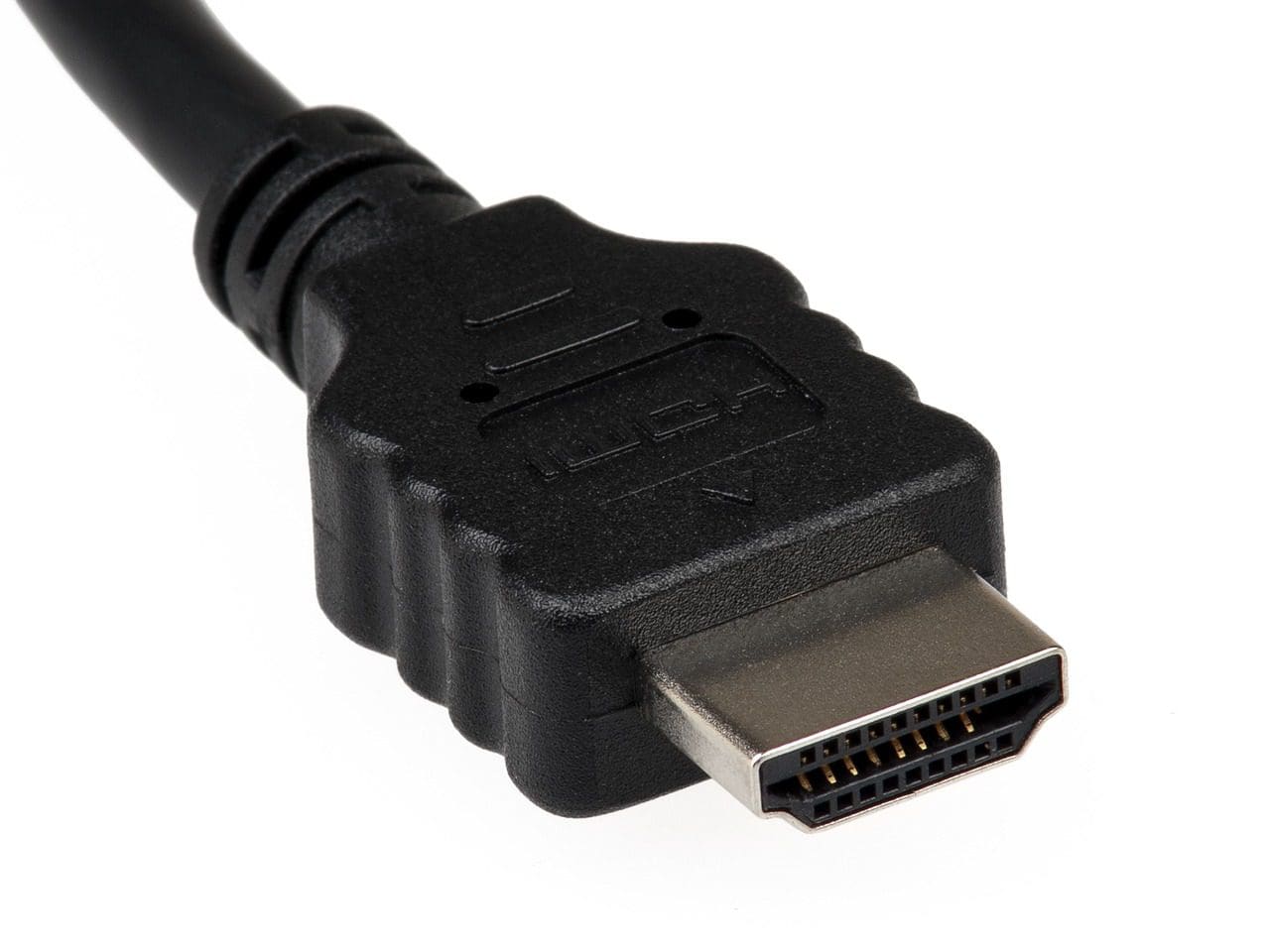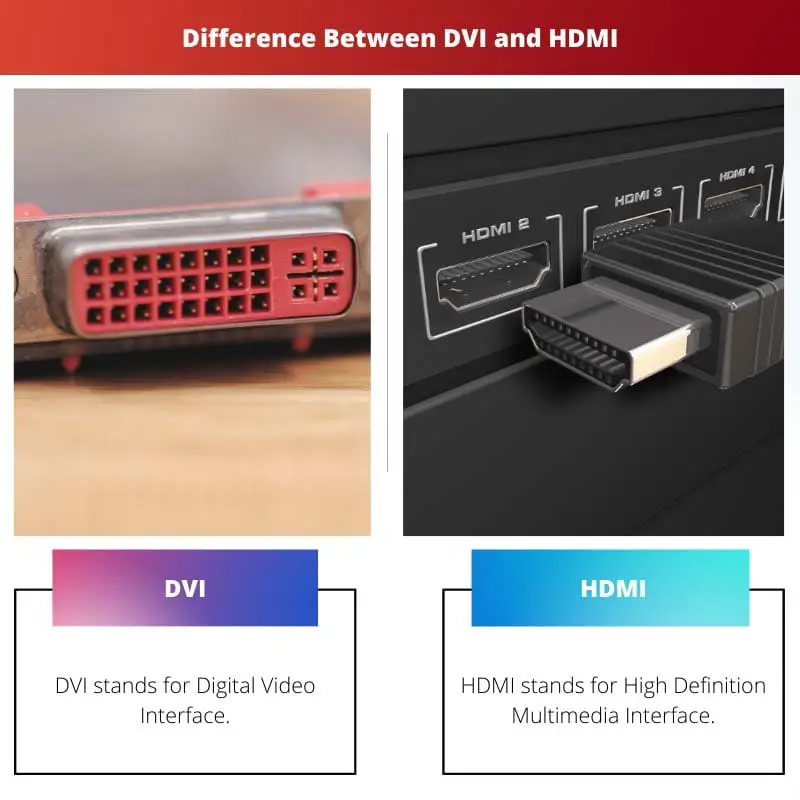Transportation of video data is primarily carried out using electronic cables. The technology has evolved from the days of using analog cables to now using digital cables for transporting data.
The evolution has made it possible to carry higher amounts of data while maintaining the quality to give a more defined video presentation.
Key Takeaways
- DVI (Digital Visual Interface) is an older video connection standard primarily used for computer monitors. At the same time, HDMI (High Definition Multimedia Interface) is a more recent standard that supports both video and audio signals.
- HDMI can transmit higher quality video and audio signals, including 4K resolution and surround sound, while DVI supports a lower maximum resolution and lacks audio transmission capabilities.
- HDMI cables have a smaller, more compact connector, making them easier to use in tight spaces than larger DVI connectors.
DVI vs HDMI
The difference between DVI and HDMI is that DVI is a 24-pin digital cable that can support HD video. HDMI, on the other hand, is a development over DVI. HDMI is a more compact digital cable that can support 1920X1200 HD video feed, along with 8 channel audio feed.

DVI stands for Digital Video Interface. It is a digital cable primarily used in LCD monitors and old desktops. It is an improvement over the earlier VGA cables.
It uses a 24-pin connection design that can support a 1920X1200 HD video feed. But DVI does not support the HDCP format, which restricts its usage.
HDMI is a fairly recent digital cable type and is a development over the DVI format of cables.
HDMI stands for High Definition Multimedia Interface and is predominantly used in newer TVs, laptops, computers, and video players.
HDMI has a compact design, and it can support a high-definition video feed, along with an 8-channel high-definition audio feed.
Comparison Table
| Parameters of Comparison | DVI | HDMI |
|---|---|---|
| Definition | DVI stands for Digital Video Interface | HDMI stands for High Definition Multimedia Interface |
| Support | DVI supports 1920X1200 HD video | HDMI supports 1920X1200 HD video along with 8 channel audio |
| HDCP support | DVI does not support video encrypted with HDCP | HDMI supports videos encrypted by HDCP |
| Design | DVI has a larger head to support all the pins | HDMI cables are comparatively very compact |
| Usage | Used in older LCD monitors and TVs | Used in almost all new laptops, desktops, TVs, Video players |
What is DVI?
DVI stands for Digital Video Interface. It is a type of digital cable used to transport digital data from a processing unit to a display unit.
It is an improvement over the earlier VGA type of digital cable.
DVI uses a 24-pin head to transport the data. Thus the design of the cable is not compact.
The cable can support 1920X1200 pixel HD video feed, but when used with a dual-link DVI connector cable, it can support up to 2560X1600 pixel feed.
The cable was very popular in the late 90s early 2000s and was used primarily in TVs, laptops, and video players as a more efficient and better alternative to the less functional VGA cables.
The only drawback with DVI cables is that they cannot support video encrypted by the HDCP (High bandwidth Digital Content Protection) code.
This limits its usage as Full HD Blu-ray video content cannot be played using this cable.
To make the pinhead more compact, some versions of the cable contain fewer pins than the regular version of the cable. But this inhibits the ability of the cable to play videos of higher resolution.
Thus cables with fewer pins cannot play HD content compared to the regular version of the cable, which is used in most video output systems.

What is HDMI?
HDMI is also a type of digital cable used to transport digital data from a processing unit to a display unit.
HDMI is an improvement over the VGA and DVI cables and stands for High Definition Multimedia Interface.
The cable has a very head design and takes up only half the space DVI cable utilizes for connection.
It is also a more advanced type of digital cable, as it can support 1920X1200 HD video feed, along with 8 channel audio feed as it includes audio pins along with the video pins in the head.
The advantage of using HDMI over DVI is that HDMI can support videos encrypted with the HDCP protection code. This mainly includes HD Blu-ray video content.
Along with HDCP support, later versions of HDMI, such as HDMI 1.2, HDMI 2.0, and so on, also support higher-resolution video formats, including 4K video data.
Along with high-definition support, they also provide higher refresh rates. This is crucial when playing video games with HD video content, as high refresh rates are desired in such situations.
Because of the compact design of the HDMI port, it is widely used in almost all newer video display systems, such as laptops, TVs, video players, and so on.

Main Differences Between DVI and HDMI
- DVI stands for Digital Video Interface, whereas HDMI stands for High Definition Multimedia Interface
- DVI supports 1920X1200 HD video support, whereas HDMI can support 1920X1200 HD video along with 8-channel audio
- DVI does not support video encrypted with HDCP code, but HDMI can support this format
- DVI has a larger head to support all the pins, whereas HDMI is very compact
- DVI is mostly used in old LCD monitors and TVs, while HDMI is used in almost all modern display units

- https://ieeexplore.ieee.org/abstract/document/8872097/
- https://ieeexplore.ieee.org/abstract/document/4253107/

The information provided is quite outdated. It would have been better to include current technological advancements in video data transportation.
I believe the article does a great job of providing a thorough analysis of DVI and HDMI technologies. The comparison table was particularly helpful in highlighting the differences between the two.
Very informative. I’ve learned a lot from this article.
Completely agree! It’s a well-researched piece.
While the article seems comprehensive, it lacks real-world examples to illustrate the application of DVI and HDMI technologies.
The comparison between DVI and HDMI is clear and well-structured. It’s evident that HDMI has several advantages over DVI.
The content is informative, but the article could benefit from a more engaging writing style to maintain reader interest.
Yes, I found the writing style a bit dry – but the content was definitely valuable.
The article fails to address the potential future developments in video data transportation technology, leaving the reader wondering about the latest advancements.
The focus on current technologies is valuable, but a brief insight into future trends would elevate the article.
Agreed. It would be beneficial to explore the trajectory of video data transportation.